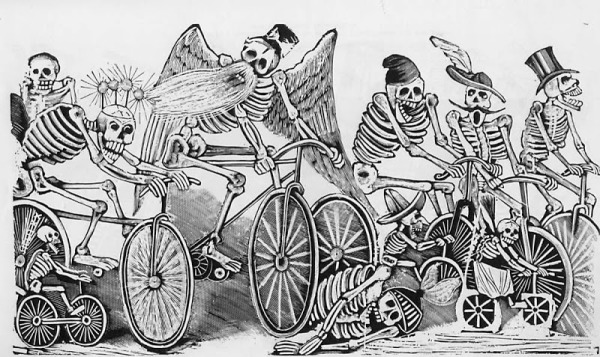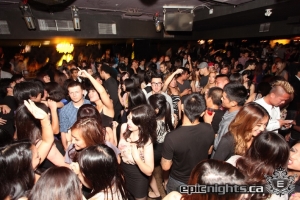
Calavera Las Bicicletas, by the Mexican artists José Guadalupe Posada
It’s the time of year to honour the dead, usually by wearing outrageous costumes and eating too much candy. While we at the Ethnic Aisle love a good party where you can’t tell who anyone is, this year we thought we’d take All Hallow’s Eve and Día de Muertos a little more literally.
Here are some personal reflections by Torontonians of various cultures on death, dying and remembering both here, and abroad. They’re about ancestors, and decisions, and grief – and also about love, and how we choose to live.
In A Way of Death, Heather Li describes why her annual visit to her family graves is actually kind of fun.
Rawiya Kameir explains the Sudanese ritual of beit el-bikka for In the House of Crying, a dramatic display of grief that first annoyed, then comforted, her.
Perhaps it happens in many cultures, but Helen Mo has only seen Asian and South Asian families hide death and illness from older relatives. “With one act, it’s possible to both love and disrespect,” she writes in Don’t Tell Grandma.
In God Lives in India, Vivek Shraya writes about love, faith, disillusionment, and the death of his personal God, the multifaith guru Sai Baba.
After 40 years in Toronto, Septembre Anderson’s relatives still grieve using Trinidadian mourning rituals. She talks about the death of her uncle in Nine Nights and Forty Days.
For many Torontonians, deaths of relatives we loved–or hardly knew–happen on different continents.
Adwoa Afful reflects on the passing of her grandmother and great-grandmother in On Death and Mourning From a Distance.
While Pacinthe Mattar talks about how “shame and guilt move through my veins” when she missed the funerals of her grandmothers and uncles in Death Struck Where I Was Born, But Never Lived.
 By Helen Mo
By Helen Mo





